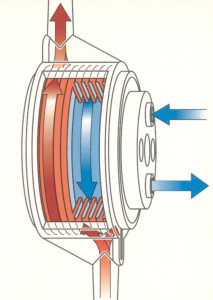The Story
A couple of years back, I was leading a discussion with a group of Product Mangers about, “Getting the Message Heard” in the crowded arena of Medical Device Marketing. The group felt as though their product messages were getting over shadowed by the “Big Boys”. They were complaining that to reach every physician in the relevant specialty they would have to spend an enormous amount of money.
The question I asked in return was, “why are you trying to reach every physician?”
I received several blank stares, a few chuckles, and a yawn. The conversation turned toward the power of FOCUS. My follow up question was, “When you are in a crowded room, say a cocktail party, how do you make sure you are hearing the person that you are talking with?” The responses: get closer to them, lean in, watch their lips to see if I can see what they are saying, isolate them in a quieter location, if it is important we leave the room.
The last question was, “what do all those techniques have in common?” The response: FOCUS. By increasing the Focus, concentrating our attention on the one voice that was important made their message and in return our message get through.
So what is the allegory in marketing? Segmentation, Targeting, Positioning (STP). STP Marketing is the thought construct that provides a vehicle for bringing focus, narrowing the beam, to those physicians who are most likely to want to use the device that you are preparing to launch.
Segmentation, Targeting, Positioning
For this post, I am really just trying to introduce the topic. There will be subsequent posts that go more into detail about each of these three elements. There are whole books dedicated to STP marketing and I encourage you to read them. The really cool aspect of STP marketing is that it can be used upfront in the new product development process to determine where the next right device opportunity is, or at the backend to focus the messaging of a device that you have inherited.
When you think about STP marketing or if you are trying to explain it to a colleague or supervisor I use the analogy of hunting. Perhaps not politically correct but quite effective in getting the concept across.
Segmentation – Identifying the part of the forest you should hunt in. Typically looking for habitat that is conducive for your desired prey.
Targeting – Knowing the nature of your quarry to an extent that you are excluding large numbers of alternative quarries.
Positioning – Using the right equipment, bait, where to build your blind, what type of call or decoy might be helpful.
Practical Example
My first successful application of STP marketing was quite by accident. The device that we were commercializing was used to cool a blood-based mixture referred to as cardioplegia. This particular device utilized counter-current flow to optimize the efficiency of heat transfer. It also featured two other features, it had the lowest priming volume of any competitive devices and it was easy to use, once you had it set-up.
Segmentation – hospitals with high procedure volume (ease of use), a focus on pediatric surgery (low priming volumes), which believed in cold-blood cardioplegia, had an active PTCA practice (quick set up required), and was a teaching hospital (ease of use)(more likely to have University educated Chief Perfusionists).
Targeting – In those hospitals identified above, the probability of success went up dramatically if the Chief Perfusionist was a graduate of The Ohio State University Perfusion program. Why, because on the final exam was a physics question, ‘Which type of flow is most efficient when trying to remove heat from blood?’ The answer, “counter-current flow.” No selling or education was needed from the sales representative; they were already biased to believe.
Positioning – For perfusionist who are required to provide cold blood cardiolpegia in the most demanding of environments. The [device name] provides the most efficient cooling, lowest prime, and over all easiest to use system on the market. Utilizing a heat exchanger technology that maximizes cooling surface area, uses the most efficient exchange method (counter-current flow) all packaged in an innovative compact housing to minimize prime volumes.
The [device] went on to become the market share leader at a premium price.
STP thinking is not easy to reduce to practice with meaningful results. It requires a good deal of insight that can only come from un-paralleled understanding of your customers. For me, Segmentation is always the greatest challenge. To make it meaningful and differentiated from the competition requires a truly unique perspective.
More to come…
“Experience is what you get, right after you need it most.”
Make it a great day,
Tim Walker
Tim Walker is the Principal consultant for The Experia Group. A small consulting firm that specializes in providing experience and expertise during critical device commercialization phases to increase the probability of success. www.theexperiagroup.com.
© 2015 The Experia Group, LLC


